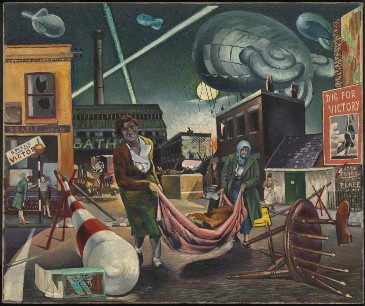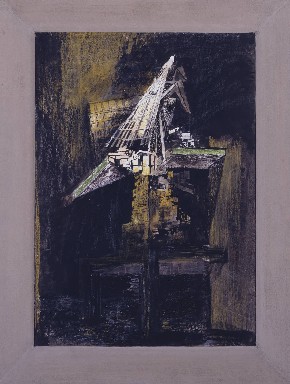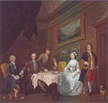The Restless Times display at Tate Britain (until 6th November) explores art that responded to the uncertainty and change of the period 1914-1945, when new technology and social and political change were transforming people’s lives, but Britain and the rest of Europe were faced with economic hardship and dealing with the devastating impact of war.
Restless Times started as an extremely popular full-scale exhibition curated by Museums Sheffield and shown at the Millenium Galleries Sheffield and Norwich Castle Museum. The original exhibition contained over 160 works, so one of the biggest challenges of curating the display for Tate Britain was to preserve the spirit of the original exhibition in the space of a single gallery.
The selection involved some difficult choices between equally interesting works. One of the most effective aspects of the original exhibition was the combination of sculpture, paintings, drawings, prints, posters and photographs, showing the different ways that artists had responded to the same concerns in a variety of media. This gave us the opportunity to show types of work that are not normally included in Tate Britain’s displays. We took out a significant number of Tate works that had been shown in the original exhibition to make sure that the display included both a diverse range of media and a large number of works from the regional collections that are Tate’s partners in the Great British Art Debate. Instead the display is complemented by Tate works in the twentieth-century galleries and the Vorticism exhibition (open until 4th September)
The display looks a little different from some of the other twentieth-century galleries as the works are closely hung in thematic groups. This allowed us to retain the thematic sections of the original exhibition and create a visual dialogue between the works in each group. Of course in practical terms this arrangement also allowed us to fit more works into the display.
The historical events of the period 1914-1945 are central to the themes of the exhibition, so the display is accompanied by a timeline that sets the artworks in context. A free ‘Restless Times’ newspaper collects newspaper articles and advertisements from the time, showing some of the significant events and changes in people’s lives in the period. It is interesting to see the different ways that artists responded to the social and political upheavals of the 20th century with a wide range of artistic languages, from realism to abstraction. The same subject matter is often treated in diverse ways, for instance the contrast between pastoral and surrealist landscapes. This sometimes allows a comparison between modernist and realist responses to the same historical event such as Louis Duffy’s and Graham Sutherland’s very different depictions of second world war bomb damage. Dominating the exhibition space is CRW Nevinson’s powerful painting Twentieth Century, a work which encapsulates the political upheaval and conflict that characterised the years between 1914 and 1945.










Dear Emma,
We enjoyed the Schwitters in Britain exhibition very very much and wondered whether any preservation work has been carried out on ‘Ja – Was? Bild’ (page 80 in the catalogue). This dates from 1920 and contains corrugated cardboard. The reason I ask is that I use corrugated cardboard as a medium for my sculptures and I am constantly asked ‘How long will it last for?’ This is the oldest artwork incorporating corrugated cardboard that I have come across, so I’d be most grateful if you could throw some light on this, if you ever get a minute to spare. Thanks for a wonderful exhibition.
sincerely
Josette